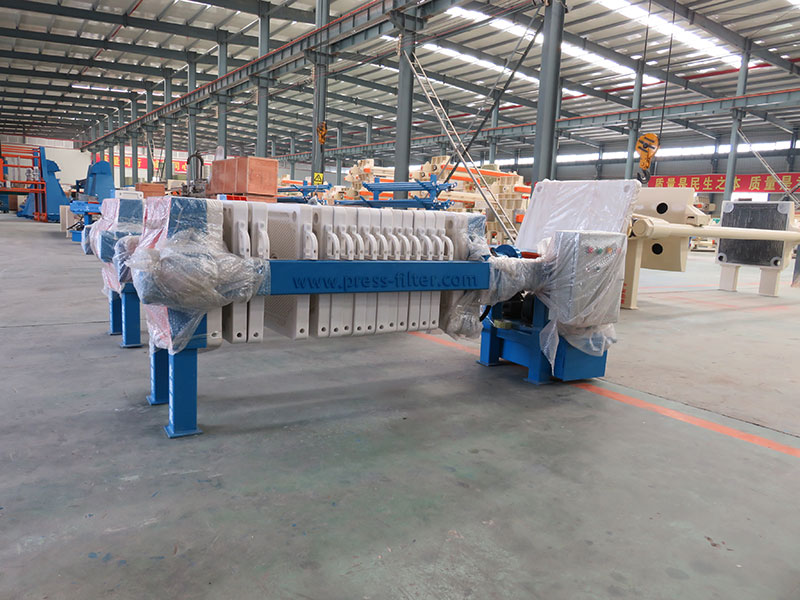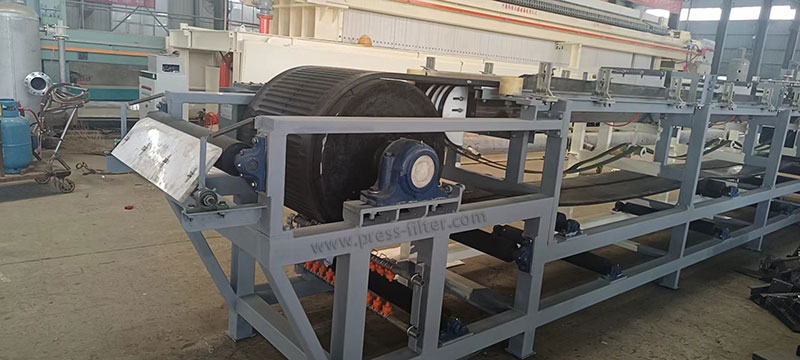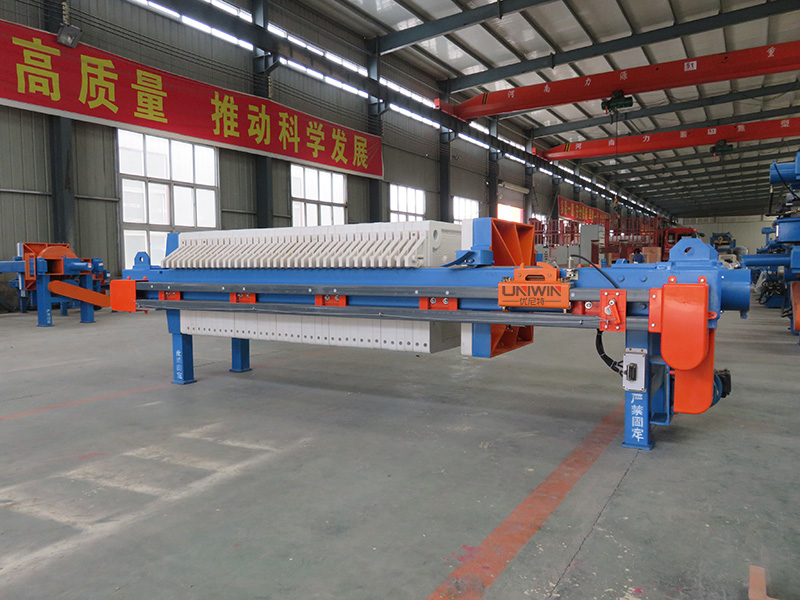Filter Press VS Belt Filter
Filter press and belt filter press are two common solid-liquid separation equipment in the industrial field. They each have their own characteristics and scope of application. Understanding the main differences between these two devices can help users choose the device that better suits their needs.
Introduction of Filter Press
Ordinary filter press, usually referred to as plate and frame filter press or chamber filter press, is a piece of equipment used for solid-liquid separation. It sets up multiple filter chambers and uses filter plates and filter cloths as separation media. Under the action of high pressure, the solid and liquid in the material are separated, the solid forms a filter cake, and the liquid is discharged through the filter cloth. This equipment is particularly suitable for processing situations where solid particles need to be separated from liquids, such as chemical production, mineral processing, food manufacturing, and wastewater treatment. Ordinary filter presses are characterized by simple operation, high efficiency, and good filter cake consistency, but they may require manual cake removal and are suitable for batch and intermittent operations.
Introduction of Belt Filter
Belt filter press, also known as a belt filter or belt dehydrator, is mainly used for sludge dehydration treatment. This equipment consists of two endless belts, and the sludge is pressed on the filter belt to achieve solid-liquid separation. The operation process of the belt filter press is continuous, which is very suitable for application scenarios that need to process large amounts of liquid or low-concentration sludge, such as municipal sewage treatment, industrial wastewater treatment, and other fields. Compared with traditional filter presses, belt filter presses have the characteristics of strong processing capacity, a high degree of automation, and easy operation, but the dryness of the filter cake may be slightly lower than that of plate and frame filter presses.
Compare Filter Press and Belt Press
Similarities between the two filter presses
The working principles are similar: the core function of both devices is solid-liquid separation. They separate solids and liquids in mixtures by physical extrusion and are used in material handling and waste management in a variety of industrial processes.
The use of filter media is similar: whether it is an ordinary filter press or a belt filter press, they all rely on filter cloth or similar filter media to achieve solid-liquid separation. These filter materials are responsible for intercepting solid particles while allowing clear liquid to pass through.
Wide range of applications: Although the specific application scenarios may vary, both ordinary filter presses and belt filter presses are widely used in many industries, including chemicals, food and beverages, mining, water treatment, and sewage treatment.

Differences between the two filter presses
Different Structures
Filter press: consists of a series of parallel filter plates forming multiple filter chambers. (The plate and frame filter press consists of alternating filter plates and filter frames). In the membrane filter press, the filter plate is also equipped with an expandable membrane to improve the dryness of the filter cake. This type of filter press usually relies on a mechanical compression device to compress the filter plate, thereby forming high pressure in the filter chamber to promote solid-liquid separation.
Belt Filter Press: The core of a belt filter press is two endless filter belts that are guided through a series of rollers to form a continuous solid-liquid separation path. On the filter belt, the sludge or material to be treated first passes through a pre-treatment area (such as a gravity dewatering area) and then enters the press area, where pressure is exerted on the filter belt by rollers to further remove moisture. Belt filter presses are usually equipped with an automatic cleaning system for cleaning the filter belt to ensure the cleanliness and effectiveness of the filter belt during continuous operation.
Efficiency is different
Filter press: The operation is very cyclical. After each filtration, the filter cake needs to be unloaded, the filter cloth cleaned, etc., and it is suitable for batch processing. The filter press can achieve high solids collection efficiency and filter cake density.
Belt filter press: It can realize continuous operation and has high processing efficiency for large-flow solid-liquid separation. However, belt filter presses produce filter cakes with a lower density compared to plate and frame filter presses.
Different Application Situations
Ordinary filter presses are more suitable for applications that require a high degree of solid-liquid separation, high filter cake density, and a small processing capacity, while belt filter presses are more suitable for continuous operation and large-flow processing, especially sludge dewatering and Wastewater treatment. Selecting the appropriate type of filter press depends on the specific application needs, the nature of the material being processed, and the expected treatment results.

Conclusion
In summary, both filter presses have their own characteristics. The choice between a filter press or a belt filter press depends on the specific application needs, throughput, desired filter cake thickness, and investment and operating costs. For occasions where a high dryness filter cake is required, a plate and frame filter press or a membrane filter press is a better choice; for occasions where a large number of materials need to be processed continuously, especially in the field of sewage treatment, a belt filter press shows Show its unique advantages. If you are not sure which filter press to choose, you can consult us, and we will answer you at any time.


